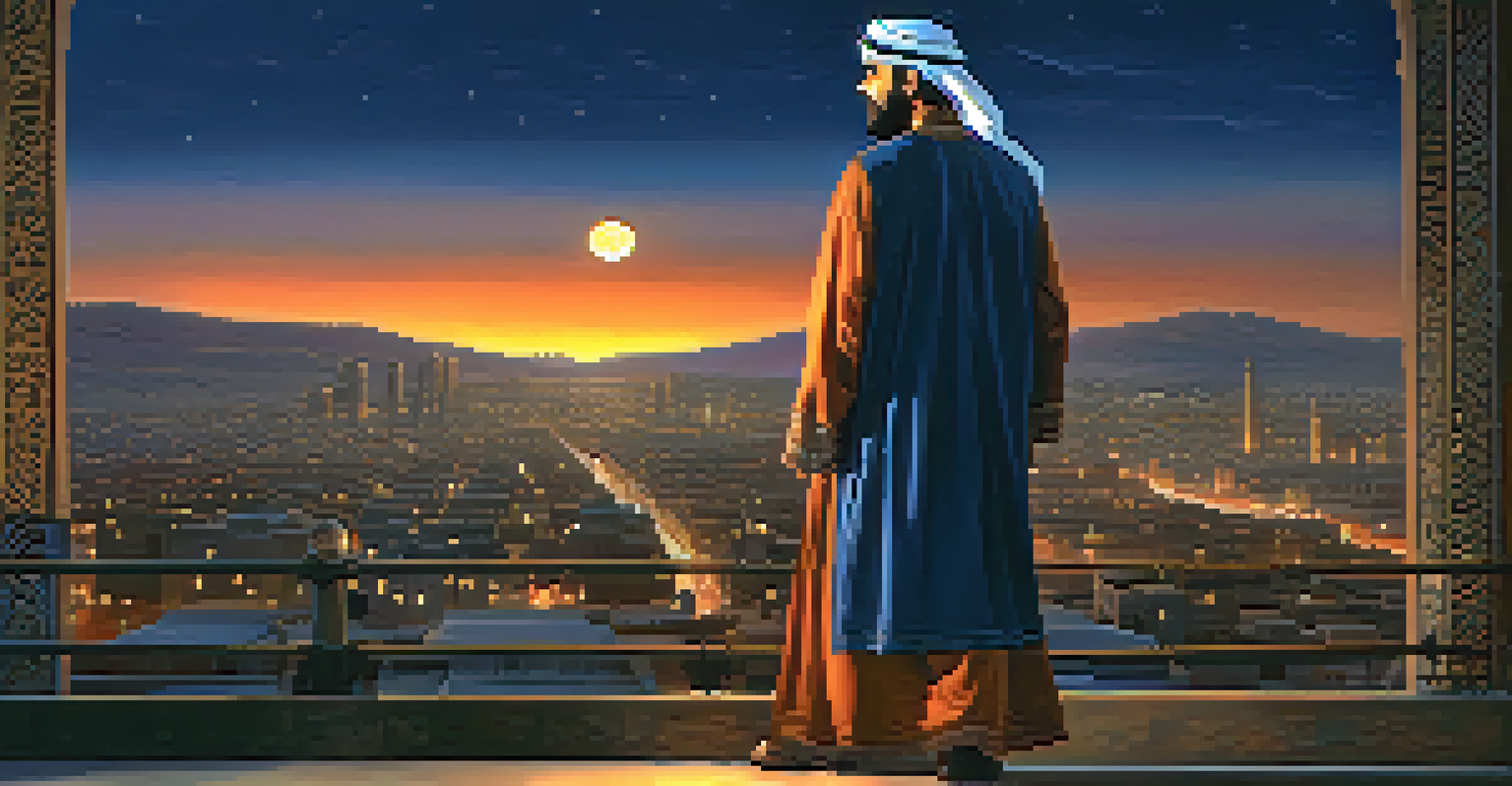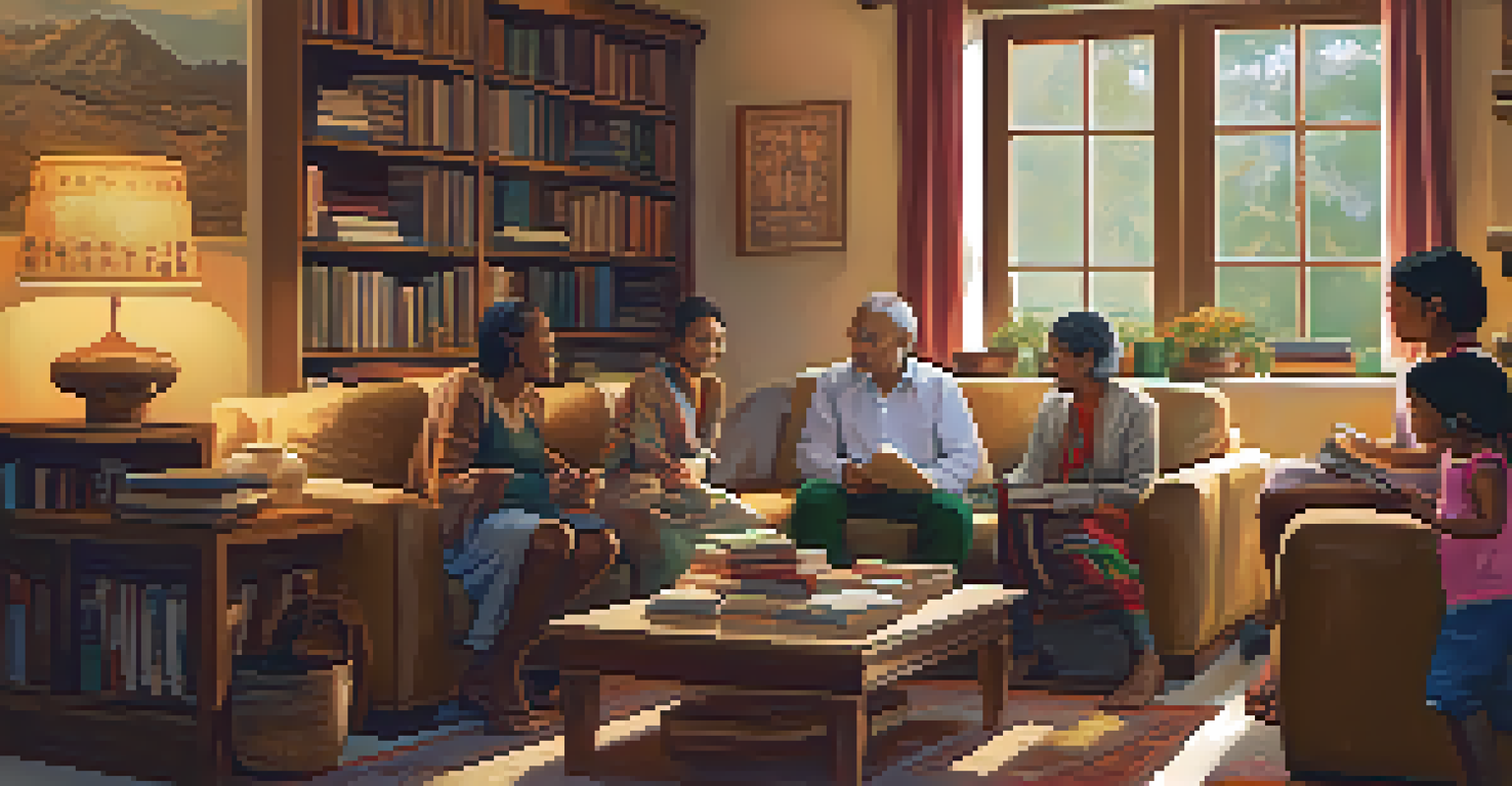Exploring Cultural Stereotypes in Contemporary Cinema

Understanding Cultural Stereotypes in Film
Cultural stereotypes are simplified and generalized beliefs about particular groups. In cinema, these stereotypes often manifest in character portrayals, plotlines, and dialogues. For instance, the 'wise old man' trope in many films embodies a stereotype that can limit the depth of character development.
Cinema is a mirror by which we often see ourselves.
These generalizations can lead to misrepresentations, influencing audiences' perceptions of different cultures. When a film repeatedly portrays a group in a negative or one-dimensional light, it not only shapes public opinion but also reinforces existing biases. Consequently, filmmakers bear the responsibility of presenting more nuanced and diverse representations.
While some filmmakers challenge these stereotypes, many still rely on them for quick audience recognition. This raises the question: how can we engage with cinema that both entertains and educates, breaking free from harmful clichés?
The Role of Diversity in Film Production
Diversity in film production is crucial for authentic storytelling. When filmmakers from various backgrounds create stories, they are more likely to portray characters in a well-rounded manner. This inclusion helps dismantle stereotypes that often arise from a lack of perspective.

For example, movies like 'Black Panther' and 'Crazy Rich Asians' not only showcase diverse casts but also highlight rich cultural narratives. These films have been celebrated for their authenticity, demonstrating that audiences crave representation that resonates with their own experiences.
Diversity Enhances Authentic Storytelling
Incorporating diverse voices in film production fosters more nuanced and authentic representations of cultural identities.
However, diversity must extend beyond casting; it must encompass writing, directing, and producing roles as well. When all voices are represented in the filmmaking process, the result is a more genuine depiction of cultural identities.
Impact of Stereotypes on Audience Perception
Stereotypes in films can significantly influence audience perceptions of different cultures. When viewers repeatedly see a particular group portrayed in a specific way, it can shape their understanding, often in misleading ways. For instance, the portrayal of Middle Eastern characters as villains can contribute to negative stereotypes and fear.
The stories we tell ourselves shape our understanding of the world.
Moreover, such representations can affect individuals’ self-perception within those communities. If someone from a specific culture sees their identity reduced to a stereotype, it may impact their confidence and sense of belonging. This highlights the importance of responsible storytelling in cinema.
To combat this issue, audiences are encouraged to critically engage with the content they consume. By questioning and discussing the narratives presented, viewers can help foster a demand for more diverse and accurate representations.
The Evolution of Stereotypes in Modern Cinema
Over the years, stereotypes in cinema have evolved, reflecting broader societal changes. The rise of social media and global connectivity has made audiences more aware of how films portray cultural identities. Consequently, filmmakers are increasingly held accountable for their representations.
A notable shift can be seen in recent films that strive for inclusivity and authenticity. Movies like 'Coco' and 'The Farewell' showcase cultural richness and complexity, moving away from outdated stereotypes. This evolution encourages a more positive dialogue around cultural narratives in cinema.
Stereotypes Shape Cultural Perceptions
Cultural stereotypes in film can lead to misrepresentations that influence audience perceptions and reinforce existing biases.
However, it's essential to recognize that while progress has been made, there is still much work to be done. Continuing to push boundaries and challenge stereotypes will foster a more inclusive film industry.
Analyzing Stereotypes Through Film Genres
Different film genres often utilize stereotypes in unique ways. For instance, romantic comedies may rely on cultural clichés to create humorous situations, while action films might depict certain cultures as the 'other.' This genre-specific usage of stereotypes can either reinforce or challenge audience perceptions.
In horror films, for example, certain cultural symbols or figures may be portrayed as terrifying or supernatural. This can perpetuate fear and misunderstanding of those cultures, leading to broader societal misconceptions. Understanding these patterns is essential for both filmmakers and audiences.
By critically analyzing how stereotypes function across genres, we can better appreciate the complexities of cultural representation in film. This awareness can lead to more thoughtful consumption and production of media.
The Power of Representation in Storytelling
Representation in storytelling is about more than just visibility; it's about authenticity and depth. Films that accurately depict diverse cultures can foster empathy and understanding among audiences. This power of representation can challenge long-standing stereotypes and promote a richer narrative landscape.
Films like 'Moonlight' and 'Roma' illustrate the beauty of authentic storytelling, drawing viewers into the intricacies of diverse lives. By showcasing real experiences and emotions, these films break down barriers and encourage viewers to reflect on their own biases and perspectives.
Stereotypes Shape Cultural Perception
Cultural stereotypes in film can significantly influence audience perceptions and reinforce existing biases.
Furthermore, when individuals see themselves represented on screen, it can validate their experiences and inspire future generations. This underscores the importance of diversity not just in characters, but in the stories being told.
Future Directions for Stereotype Representation in Cinema
As we look to the future, the film industry faces both challenges and opportunities regarding cultural stereotypes. The rising demand for inclusive storytelling suggests that audiences are ready for change. Filmmakers who embrace this shift can create content that resonates with a broader audience, enriching the cinematic experience.
Moreover, technology and streaming platforms have transformed how stories are told and shared. This evolution allows for niche stories and diverse voices to emerge, challenging the traditional Hollywood narrative. In turn, this could lead to a new era of storytelling that prioritizes authenticity over stereotypes.

Ultimately, the future of cinema lies in its ability to reflect the world’s diversity. By continuing to push for representation and challenging stereotypes, filmmakers can craft narratives that inspire, educate, and unite us all.